Ekta Mahila Sangathan, Gothib, Santhrampur, Gujarat - 389260
Patna’s kite makers: caught in a crosswind
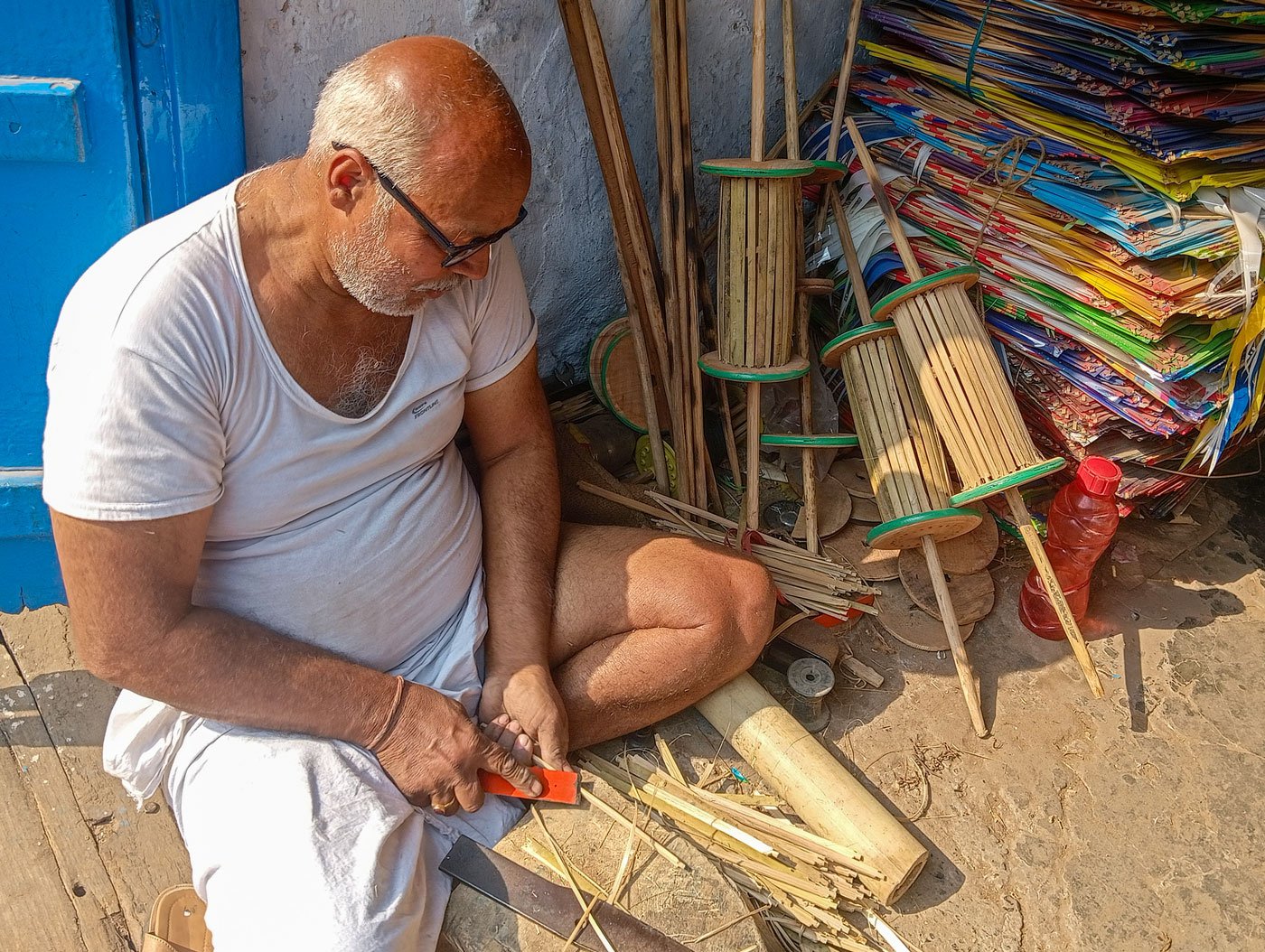
Patna’s kite makers: caught in a crosswind
The sport of kite flying is supported by a complex craft – a seven-step process that calls for different skills and materials. The capital city of Bihar is a major supplier of tilangis (kites), and the ones made here have a distinct identity, but the sport itself is in decline“Patna used to host week-long tilangi [kite] competitions. Kite-flyers from Lucknow, Delhi and Hyderabad were invited. It was a festival,” says Syed Faizan Raza. He is speaking as we walk along the Ganga, the expanse of water reflecting the open skies where he says thousands of kites were once at play.
An old-timer from Doolighat which lies on on the banks of the river in Patna, Raza says from aristocrats to tawaifs , people from all social classes patronised the sport. He reels of names – “Bismillah Jan [ tawaif ] used to provide patronage, and Mir Ali Zamin and Mir Kefayat Ali were some of the well acclaimed ustads [masters] of patang-saazi [making kites] and patang-baazi [the sport of flying kites].”
To supply the sport, the area between Patna’s Gurhatta and Khwajakalan at Ashok Rajpath (a distance of around 700-800 metres) was once filled with kite traders, their colourful wares fluttering invitingly outside shops. “The thread for kites in Patna were thicker than the usual threads, and a mix of cotton and silk, popularly known as nakh ,” he adds Raza.
An 1868 copy of Ballou’s Monthly Magazine mentions Patna as being famous for kites. “Anybody desirous of making his fortune quickly should naturalize the Patna kite in this land. Every tenth shop in the bazaars is a kite shop, and you would think that the whole population fly kites. The kite is diamond shaped, light as a feather, has no tail and is flown with the lightest possible silk cord.”
More than a hundred years later, many things have changed, but Patna’s tilangis retain their unusual feature – they are kites without tails. “ Dum to kutte ka na hota hai ji, tilangi ka thode [tails are for dogs not for kites],” says kite craftsperson Shabina, laughing. In her seventies, she stopped making tilangis some time ago when her eyes grew weak.
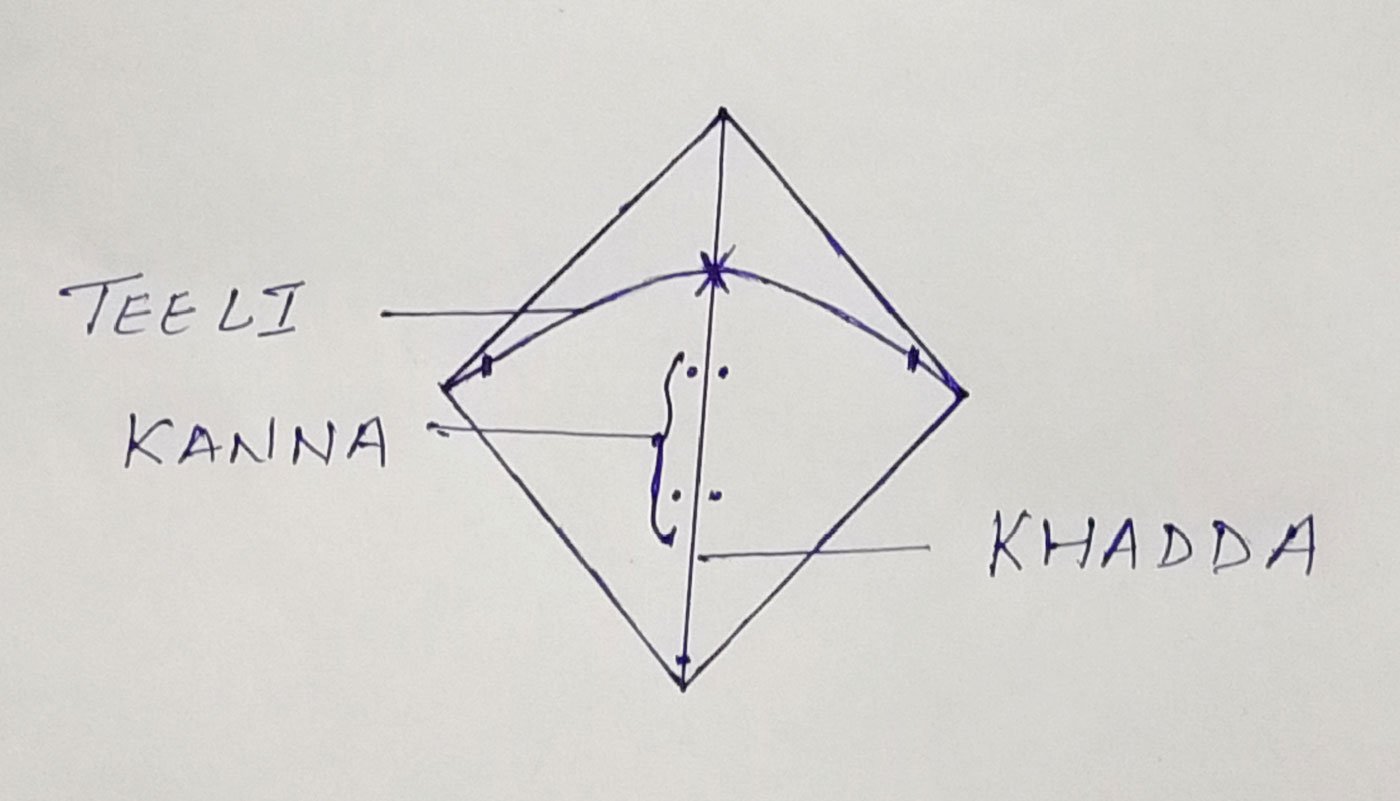
The Ashok Rajpath area in Patna was once filled with kite traders, their colourful wares fluttering invitingly outside shops
Patna continues to be a hub of kite-making and supplies – kites and related materials go from here to all over Bihar and to neighbouring states as well. Both paretis and tilangis travel to Siliguri, Kolkata, Malda, Ranchi, Hazaribagh Jaunpur, Kathmandu, Unnao, Jhansi, Bhopal and even Pune and Nagpur.
*****
“Tilangi banane ke liye bhi time chahiye aur udane ke liye bhi [You need time to both make and fly kites],” says Ashok Sharma, quoting his late father. “Today, time is the rarest of the rare things in this city.”
Sharma is a third generation tilangi (kite) maker and seller. His century-old shop with its mud walls and mud roof tiles lies in the heart of Patna city, 100 metres from Bihar’s oldest church – Padri ki Haweli at Ashok Rajpath. He is also one of the few masters of making paretis (bamboo reels that hold the string attached to the kites). The manjha or nakh – thread for kites are now Chinese and factory-made, and thinner and lighter than earlier.
Seated in the front, Sharma ji’s his hands are busy as he is rushing to finish an order from a village for 150 paretis that must be delivered in an hour.
Making paretis – bending and tying the stiff wooden sticks – is a skill quite different from making kites, and one that few can do, and Sharma is well known for his expertise. Unlike some of the other tilangi craftspersons, he does not subcontract the making of the kites or reels, preferring to sell what he makes.
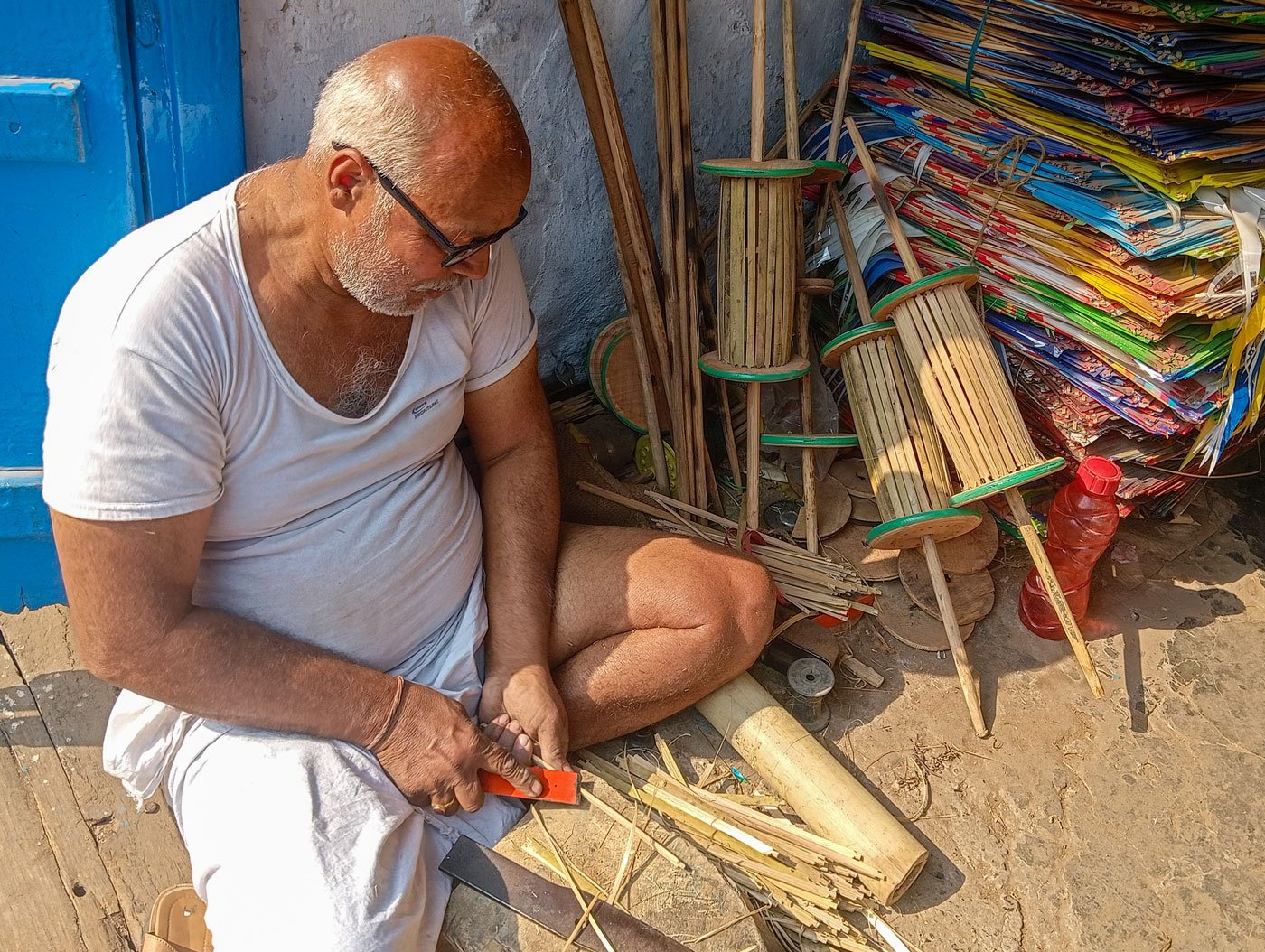
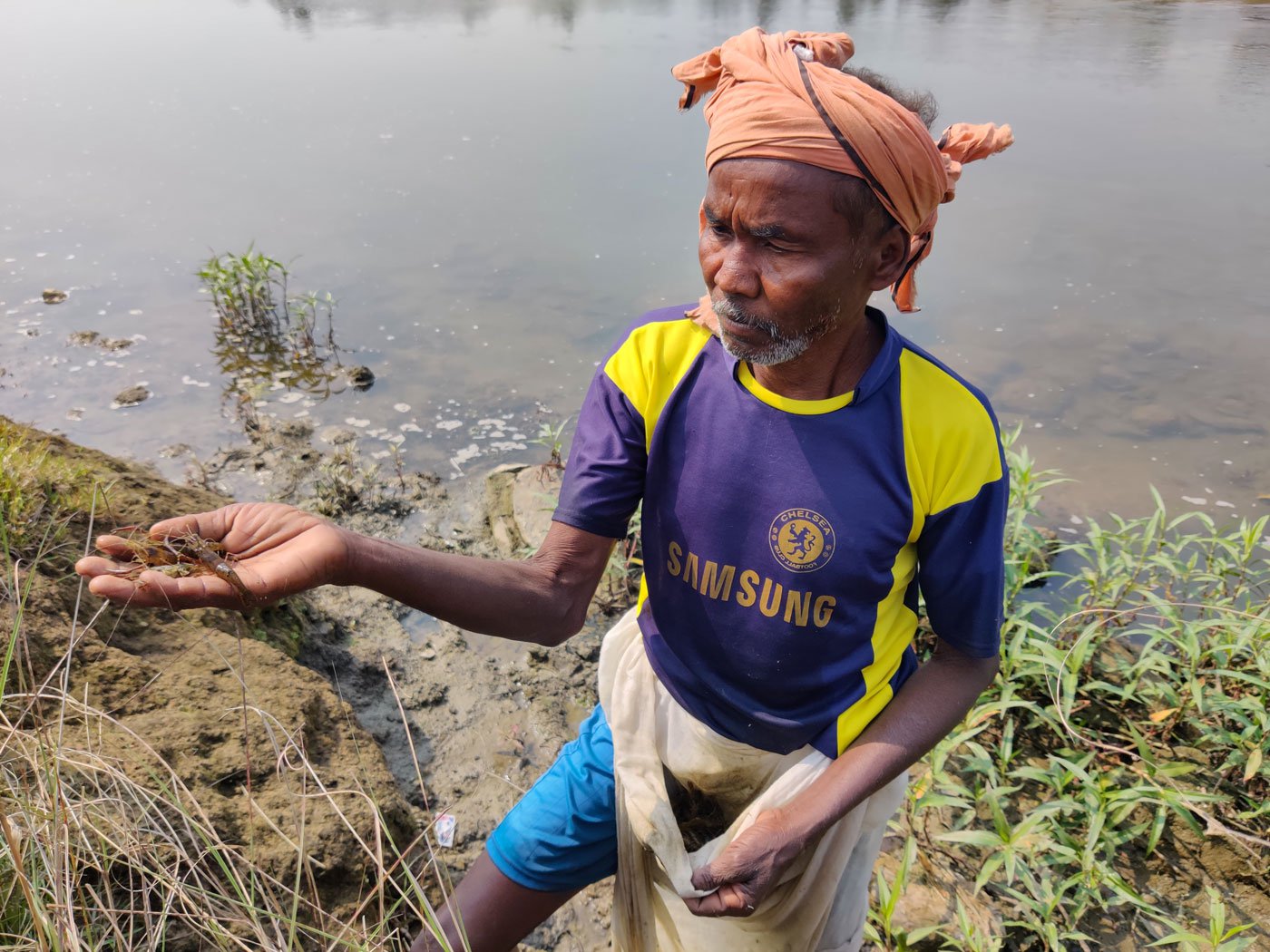
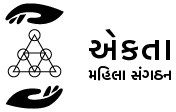
0 Comments